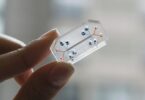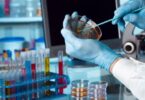With respect to embryology, this process has not yet been lived in the reproduction laboratory, but industry 4.0 is about to form it: technology has reached a point where this artisanal and highly qualified scientific work can be automated , so that it is possible that there are jobs and that those who remain are submitted to the Bravermann de-qualification process.
In 1974 in “Labor and Monopoly Capital” Harry Bravermann described what we know as the process of de-qualification of craft work. Bravermann referred to the work of the workers, but its principle is generalizable to all environments where technology has modified the work processes. According to Bravermann, workers possess a qualification that goes beyond the skills or abilities required to perform a job.
The arrival of genomics closely linked to information technologies, as well as the maturity of robotics and nanotechnology, which can put an end to this balance of forces that allows a skilled and at the same time handcrafted work in the laboratory.
The costs of genetic sequencing, nanotechnologies and robotics have fallen, so that an old project of the 90s like the robotization of intracytoplasmic injection or ICSI is already possible. Nor is it already science fiction the vitrification or automatic freezing of ovules, for example, for the preservation of fertility.
 The embryologist is dedicated to the selection of embryos according to their morphology and other factors, algorithms such as the one developed by Auxogyn in Eeva allow a very reliable prediction of the viability of embryos.
The embryologist is dedicated to the selection of embryos according to their morphology and other factors, algorithms such as the one developed by Auxogyn in Eeva allow a very reliable prediction of the viability of embryos.
In addition, the combination of robotic technology and microfluidics allows the analysis and monitoring of embryo health, identify metabolites and other biomarkers, measure oxygen consumption or use microfluidics to control the flow of pumps and valves.
It is expected that for the period 2020 and 2025 these technologies can automate the handling of liquids moving small volumes at will horizontally, facilitate the puncture of follicles assisted by computer, allow the placement and safe movement of ovules or detect the flagellar movement of sperm.
By 201, a Japanese team in the animal genre have already managed to develop, the artificial gestation of a goat.
However, in all industries and in all sectors there have been strong automations since the Industrial Revolution and the assisted reproduction laboratory is no exception. Now the technology is mature because the technological, biotechnological and pharmaceutical companies have invested in it. This will mean a loss of employment for embryologists. Those who remain in their jobs will gradually lose qualification and perform increasingly routine tasks, as has happened in other industries.
It is likely that in the next 10 years there will be a greater use of technologies such as the Internet of Things and Artificial Intelligence in this area.
Industry 4.0 is changing the way many things are currently done. With the help of technologies in the cloud, big data, Internet of Things (IoT) and Artificial Intelligence (AI), processes are being automated and operating costs are reduced.
The health sector is not exempt from this industrial revolution, because techniques such as telemedicine seek to break the barriers faced by dozens of countries with a shortage of medical personnel.
Currently the first innovations of this type are already glimpsed, such as the use of AI for the search of molecular alterations.
It is expected that in the next decade there will be a greater opening and adoption of IoT technologies. According to the consultancy Mckensey & Co, the use of the Internet of Things in the health sector will allow a saving of USD $ 63 billion, worldwide, in costs and medical expenses during the next fifteen years.
These and other innovations are also possible in Pharmamedic.







